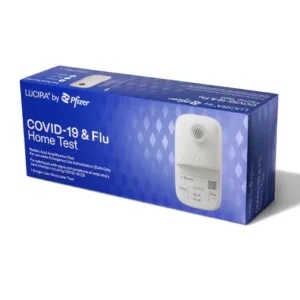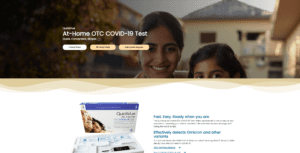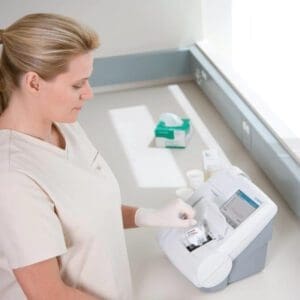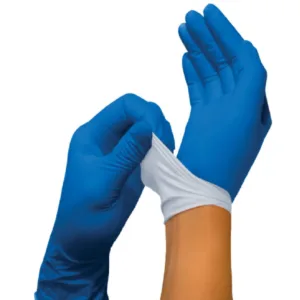
In a matter of months, COVID-19 went from an unknown virus to a global pandemic. By May of 2022, over half a billion people worldwide have been infected by COVID.
Slowing the spread of COVID-19 is paramount to keeping people healthy and alive. One of the best lines of defense at slowing the infection rate is through the use of at-home COVID tests.
These tests are easy to access, simple to use, and are often free. Knowing how these COVID tests work can keep you and your loved ones safer by detecting the virus early on.
This COVID test guide will go over everything you need to know about this critical virus detection tool.
The COVID-19 pandemic started in December of 2019. Several people in Wuhan, China, began experiencing symptoms of a respiratory illness. Just three months later, COVID-19 was declared a global pandemic.
Symptoms of COVID-19 can be similar to the common cold or flu. Many people have symptoms of a respiratory illness along with cough, fever, and runny nose.
While many people experience mild illness, some people have very severe symptoms. People who are older or have underlying health conditions can get very ill from COVID-19.
This virus spreads when an infected person coughs, sneezes, sings, or speaks. The liquid droplets from those activities spread through the air and infect anyone in a close area.
You may not develop any symptoms, but if you have COVID, you can still be infectious. Masking, distance, and testing are all effective ways to slow the spread of this virus.
When the pandemic started, COVID numbers remained low. Over the year, the virus has evolved, changing its genetic makeup. Many of these new variants are more contagious, making it even more important to test for COVID when you’re sick.
Today, the virus is at its most contagious point. In the last two weeks, one in 236 people have tested positive for COVID.
The number of positive cases in the United States is much more significant than what is documented. People with mild symptoms may not know they have the virus and aren’t getting tested. Many home tests are also not logged into the official COVID case count numbers.
At-home COVID tests help more people know when they have this virus. This tool is especially important because of the number of these underreported case numbers.
COVID-19 tests come in two main categories: antigen COVID tests and PCR tests. The antigen tests detect the virus’ specific proteins and provide rapid results.
While the antigen tests are faster, they have limitations. The results are inaccurate if you do not use the correct technique for collecting the sample.
The PCR test requires a swab sample of the inside of your nostrils. You can get a PCR test at a doctor’s office or a COVID testing site. These tests take longer for results but are more accurate at detecting the COVID-19 virus.
Rapid at-home testing kits are one of the best options to slow the spread of COVID-19. You can have your COVID results in 15 minutes using these antigen tests.
As the virus changes, so do people’s approaches to stopping its spread. Figuring out if you should take an at-home COVID test or a PCR test can be overwhelming.
An at-home COVID test is a good option for people who need immediate test results. If you have symptoms of COVID, a rapid test can tell you in minutes if you have this virus. The faster you know your results, the sooner you can put safety protocols into place.
Other people who may benefit from at-home COVID tests are those who need a negative test for an event or travel. Right now, many places require you to show proof of a negative test before going into a crowded area.
At-home COVID tests work very much like pregnancy tests. These tests have a strip coated in antibodies that match a protein found in COVID-19.
Although each test differs slightly, most COVID tests have the same general components. You will usually find the following when you open your COVID test box:
You will also need to have a watch with a timer or a clock handy before you conduct your test. You will use an included swab to collect a sample from your nose. Once the sample is on the swab, you will add a type of included liquid to the sample.
This liquid and sample mix is then added to the test cartridge, and you wait to see if the strip detects the COVID virus. If you do have COVID-19, your test will show two lines. Depending on your results, you may need to repeat the test to be 100% sure that you don’t have the COVID-19 virus.
Once you have a result, you may be wondering what your next steps are. Your actions will look different depending on if you have tested positive or negative.
If two lines pop up on your test, the test found the virus in your nasal swab. You will need to isolate yourself at your home for the next five days.
Make sure to contact anyone you were close to the two days before your illness. If you are symptom-free, contact any people you were near two days before your positive test result.
If you have to be around others, wear a close-fitting mask like an N95 or KN95. You will need to wear this mask five days after your isolation ends when you are around people.
Make sure to monitor your symptoms. If you have severe symptoms like trouble breathing, go to the emergency room or call your doctor.
Contact your doctor if you find your symptoms getting worse instead of better. They are also a great resource if you have any questions.
A negative result means the virus wasn’t detected at the time that you took the test. This doesn’t mean you don’t have COVID, though.
If you perform your test too early, your body may not have enough of the virus to detect on the test yet. Make sure to repeat your test in the next 24 to 48 hours to confirm your results.
The most essential COVID test advice is to read all the directions on the box before you begin. You don’t want to get a false result due to user error.
If you find out you’ve been a close contact and immediately take a COVID test, your results may not be accurate. The virus takes three to five days before you will have enough of the virus to detect with the test.
Make sure to wash your hands before you test and after you have finished. This step will help keep germs away.
Be wary of fraudulent tests. Any COVID test that you use at home should have FDA approval. Non-approved tests could give a false negative response and risk you spreading COVID.
Don’t read your test too early or too late. Reading your test too early can result in a false negative. Once the time limit on your test is up, look at your test result and throw it away.
Don’t move your test around while it is processing. Keeping it still will ensure that you get an accurate result.
You can get at-home COVID tests for free through several different providers. The federal government is distributing some of the kits through the mail. Private insurance companies are also reimbursing you for the costs of these kits.
To get a reimbursement for your test, you will save your receipt and submit it online. Your insurance provider will reimburse you for a certain number of COVID tests each month.
If you don’t have insurance, you can still find a COVID-19 testing kit for under $20.00. The kits come with instructions on how to use the test and where you can get results. Reading the directions carefully will help you get the most accurate results.
The at-home COVID test kits will help protect you and others from spreading the COVID virus. The kits provide an easy way to test yourself for the virus when you’re sick, need to travel or keep others safe. Your results will help you make decisions about your safety and the safety of others.
If you are looking for quality COVID-19 tests, Peach Medical is the place to go. We have a variety of COVID tests to meet any provider’s needs. Order your COVID-19 antigen tests today!







PeachMedical Corp